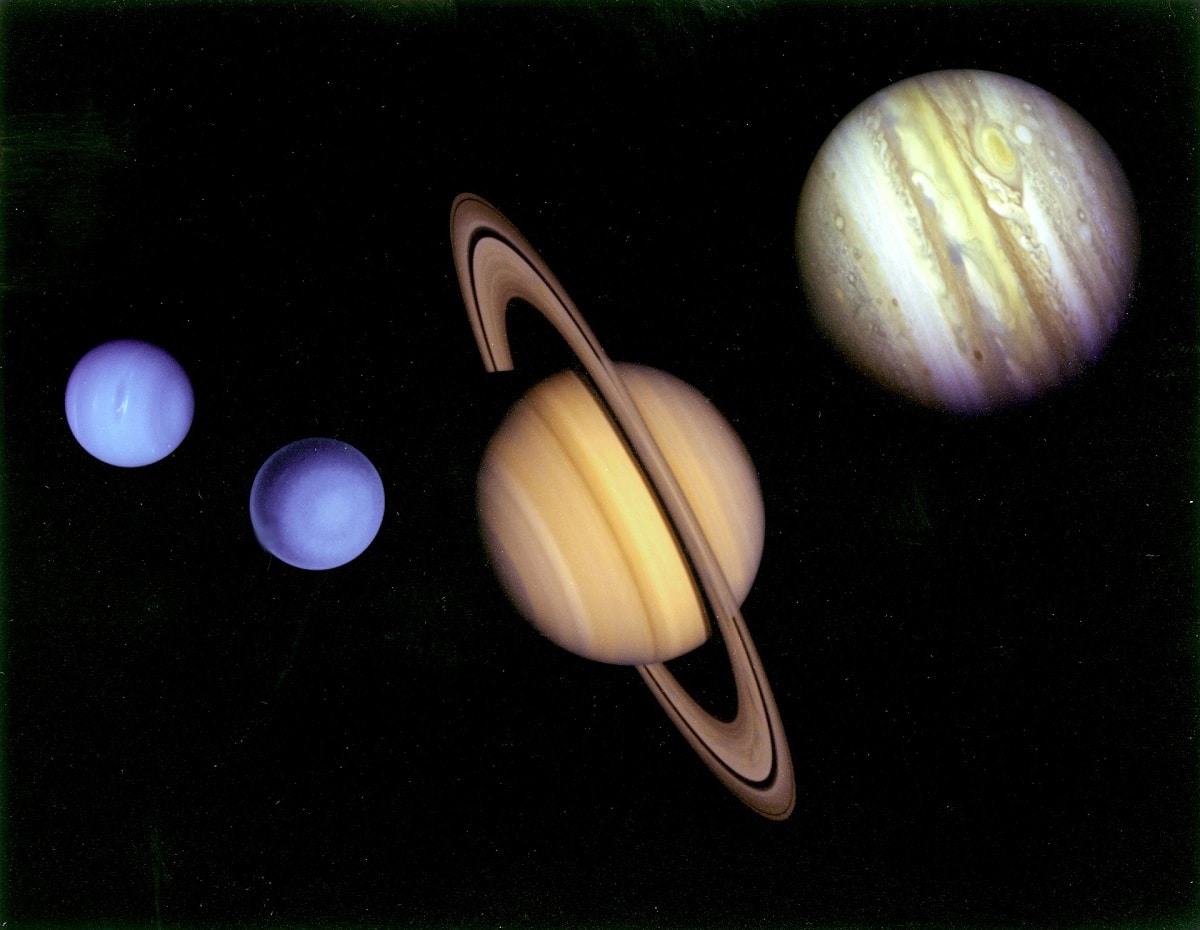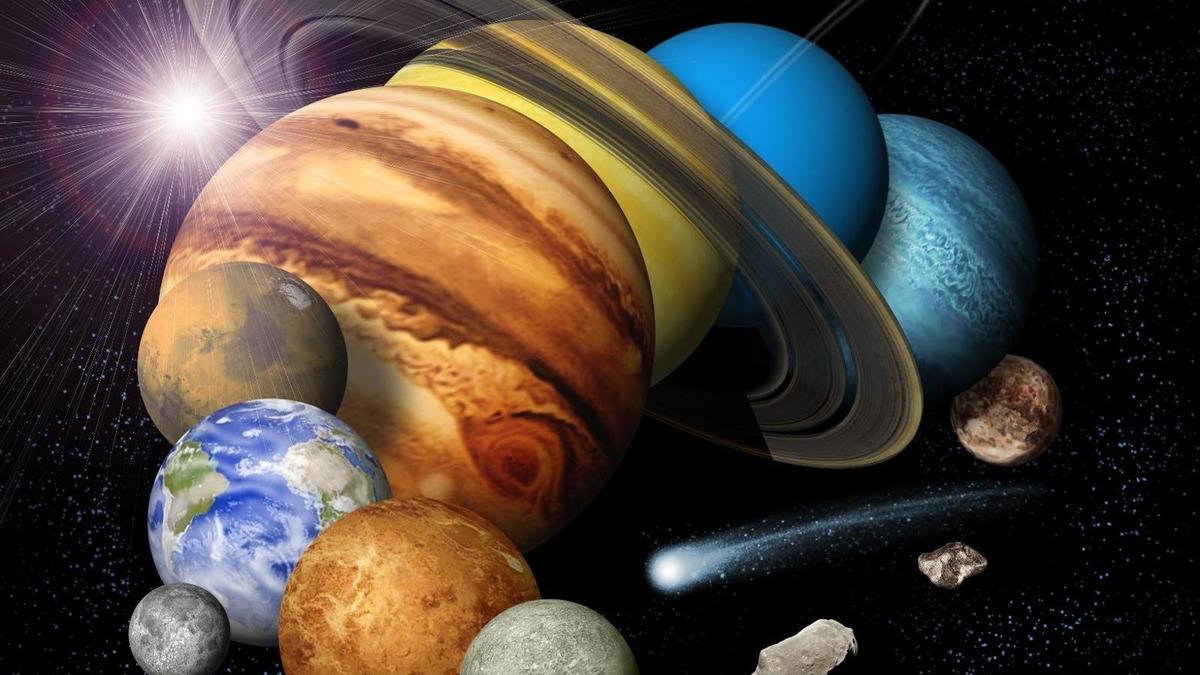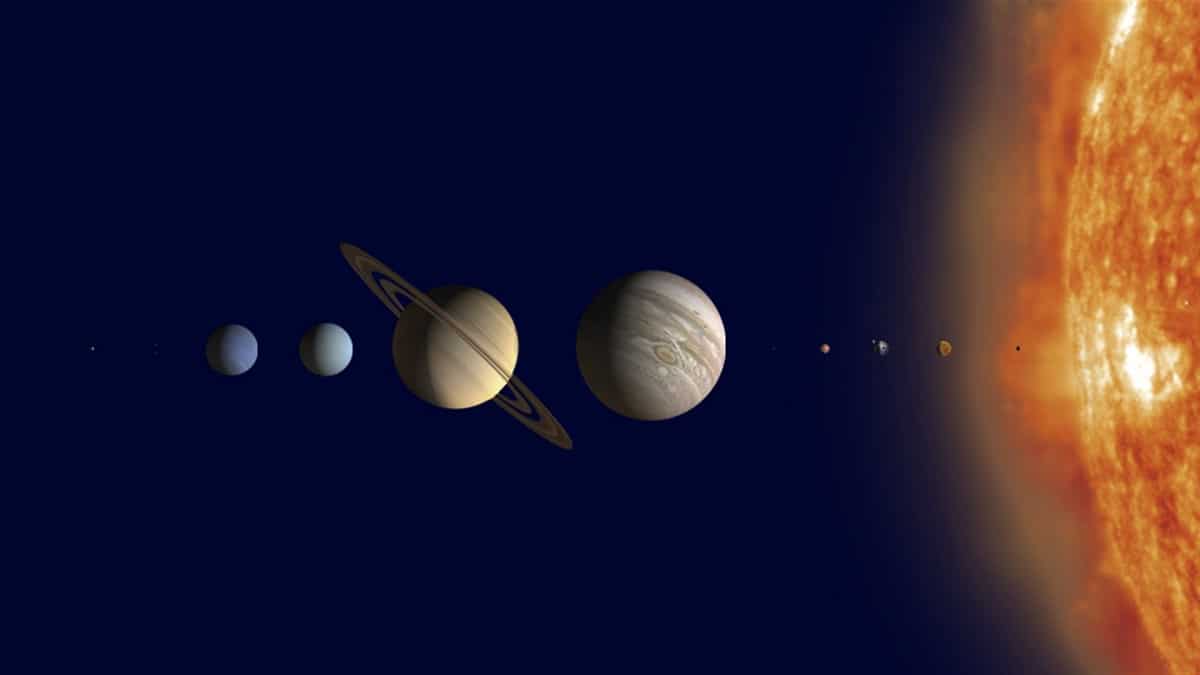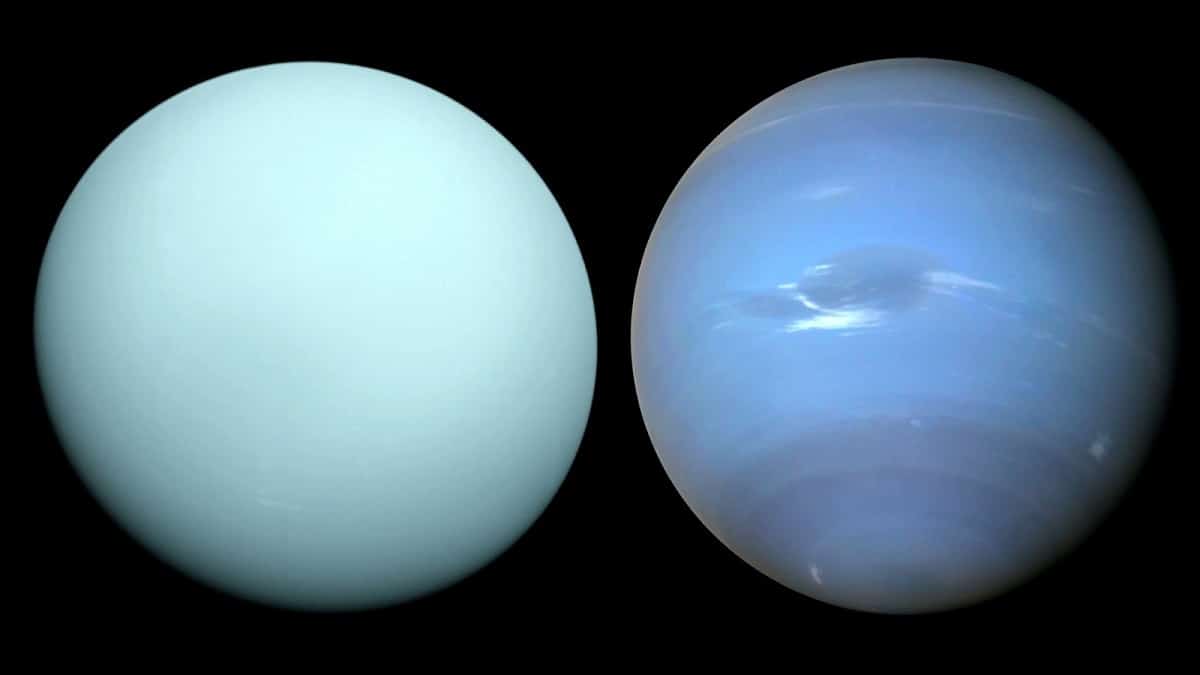
We know that solar system It is made up of different types of planets whose characteristics and composition are different. There are the gaseous planets which are known as gas giants and it is nothing more than a large planet that is composed mainly of gases such as hydrogen and helium but has a relatively small rocky core. Unlike the other rocky planets that are entirely made up of rocks and with a gaseous atmosphere, here a greater amount of gases predominate.
In this article we are going to tell you all the characteristics, differences and curiosities of the gaseous planets.
What are gaseous planets

At first glance and from the name, it may seem that we are talking about balls or gas. We are simply talking about a planet whose core is rocky but the rest of the planet is gas. These gases are usually predominantly hydrogen and helium. Among the gaseous planets that make up the solar system we have Jupiter, Saturn, Uranus y Neptuno. These 4 gas giant planets are also called Jovian planets or outer planets. They are those planets that reside in the outer part of our solar system beyond the orbits of Mars and the asteroid belt.
While Jupiter and Saturn are the largest gaseous planets, Uranus and Neptune have a somewhat different composition with special characteristics. When we talk about the gaseous planets we see that they are mainly composed of hydrogen and therefore, which is a reflection of the composition of the original solar nebula.
Which are

We are going to list which are the main gaseous planets of our solar system:
- Jupiter: it is the largest planet in the entire solar system. It is one of the reasons why it is known by the name of giant planets. Its main composition is hydrogen and helium that surrounds a dense core of rocks and ice. Being so large it has a huge magnetic field and is visible to the naked eye. From the ground we can see what looks like a much brighter star of a reddish color and that is Jupiter. One of their main characteristics is the red stain they have due to the great pressures of the atmosphere and high clouds.
- Saturn: the main feature of Saturn is its large rings. It has 53 known moons and is made up mainly of hydrogen and helium. It is the same as with the previous planet, all these gases surround a dense rocky core whose composition is similar.
- Uranus: it is the only planet tilted on its side. It is the one that rotates backwards in relation to each planet. Its atmosphere apart from hydrogen and helium is composed of methane. It completes its orbit in 84 Earth years and has 5 main satellites.
- Neptune: the composition of its atmosphere is similar to that of Uranus. It has to date 13 confirmed moons and was discovered by several people in 1846. Its orbit is much slower since it is almost circular and it takes about 164 Earth years to go around the sun. Their rotation period is around 18 hours. It also has a very similar structure to Uranus.
When classifying these gaseous planets, it should be mentioned that, due to the difference that these planets have in their structure and composition, they also differ between them. Jupiter and Saturn are classified as gas giants, while Uranus and Neptune are ice giants. Due to the distance from the sun that they occupy in the solar system, they have the nuclei composed of rock and ice.
Characteristics of the gaseous planets

Let's see now what are the main characteristics that define these gaseous planets:
- They do not have a well defined surface. Since the core is the only rocky thing and the rest is the it does not have a completely defined surface.
- They are made up of an immense mass of gas where mainly hydrogen and helium abound.
- When scientists refer to the diameters, surfaces, volumes and densities of these planets they are made with respect to the outer shell that is seen from outside.
- Atmospheres are very dense and it is the reason why the gases continue on that planet and do not spread throughout the rest of the universe.
- All They have a large number of satellites and ring systems.
- It is known by the name of Jovian planets since they have a size and characteristics similar to Jupiter.
- Its density is low and its core is very rocky. It must be taken into account that since its composition is mostly gases, it has a very low density. The nucleus, on the other hand, is more dense.
- When receiving pruning amount of light it has a fairly low temperature. The coldest planet is Neptune.
- They rotate quickly with an average rotation of 10 hours. However, its translational motion around the sun is much slower.
- Its magnetic and gravitational fields are quite powerful and it is the reason why they can retain the masses of gases.
- The atmospheres and weather patterns are quite similar between all of them.
Differences from rocky planets
Among the main differences that we see with respect to the rocky planets is that the gaseous planets are composed mainly of hydrogen, helium and methane. That is, they are composed mainly of gases, while the other planets of rocks. Rocky planets have mostly a solid surface and are made up of rocks.
Another major difference is that the surface of rocky planets is well defined. The rocky planets have secondary atmospheres that have emerged from internal geological processes while the rocky planets gaseous planets have primary atmospheres that have been captured directly from the original solar nebula. These planets are being studied in greater detail given human technology.
I hope that with this information you can learn more about the gaseous planets and their characteristics.